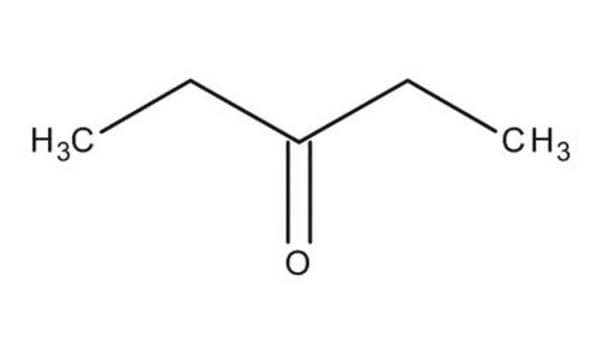235571
1,1,1-Trichloroethane
ReagentPlus®, ≥99%, contains 0.05% low alkyl epoxide as stabilizer
Synonim(y):
Methylchloroform, ‘Chlorothene’
About This Item
Polecane produkty
gęstość pary
4.6 (vs air)
ciśnienie pary
100 mmHg ( 20 °C)
linia produktu
ReagentPlus®
Próba
≥99%
temp. samozapłonu
998 °F
zawiera
0.05% low alkyl epoxide as stabilizer
granice wybuchowości
7.5-15 %, 25 °F
współczynnik refrakcji
n20/D 1.4366 (lit.)
tw
74-76 °C (lit.)
mp
−35 °C (lit.)
gęstość
1.336 g/mL at 20 °C (lit.)
ciąg SMILES
CC(Cl)(Cl)Cl
InChI
1S/C2H3Cl3/c1-2(3,4)5/h1H3
Klucz InChI
UOCLXMDMGBRAIB-UHFFFAOYSA-N
Szukasz podobnych produktów? Odwiedź Przewodnik dotyczący porównywania produktów
Zastosowanie
Informacje prawne
Hasło ostrzegawcze
Warning
Zwroty wskazujące rodzaj zagrożenia
Zwroty wskazujące środki ostrożności
Klasyfikacja zagrożeń
Acute Tox. 4 Inhalation - Eye Irrit. 2 - Ozone 1 - Skin Irrit. 2
Kod klasy składowania
6.1C - Combustible acute toxic Cat.3 / toxic compounds or compounds which causing chronic effects
Klasa zagrożenia wodnego (WGK)
WGK 3
Temperatura zapłonu (°F)
Not applicable
Temperatura zapłonu (°C)
Not applicable
Środki ochrony indywidualnej
Eyeshields, Faceshields, Gloves, type ABEK (EN14387) respirator filter
Certyfikaty analizy (CoA)
Poszukaj Certyfikaty analizy (CoA), wpisując numer partii/serii produktów. Numery serii i partii można znaleźć na etykiecie produktu po słowach „seria” lub „partia”.
Masz już ten produkt?
Dokumenty związane z niedawno zakupionymi produktami zostały zamieszczone w Bibliotece dokumentów.
Nasz zespół naukowców ma doświadczenie we wszystkich obszarach badań, w tym w naukach przyrodniczych, materiałoznawstwie, syntezie chemicznej, chromatografii, analityce i wielu innych dziedzinach.
Skontaktuj się z zespołem ds. pomocy technicznej









